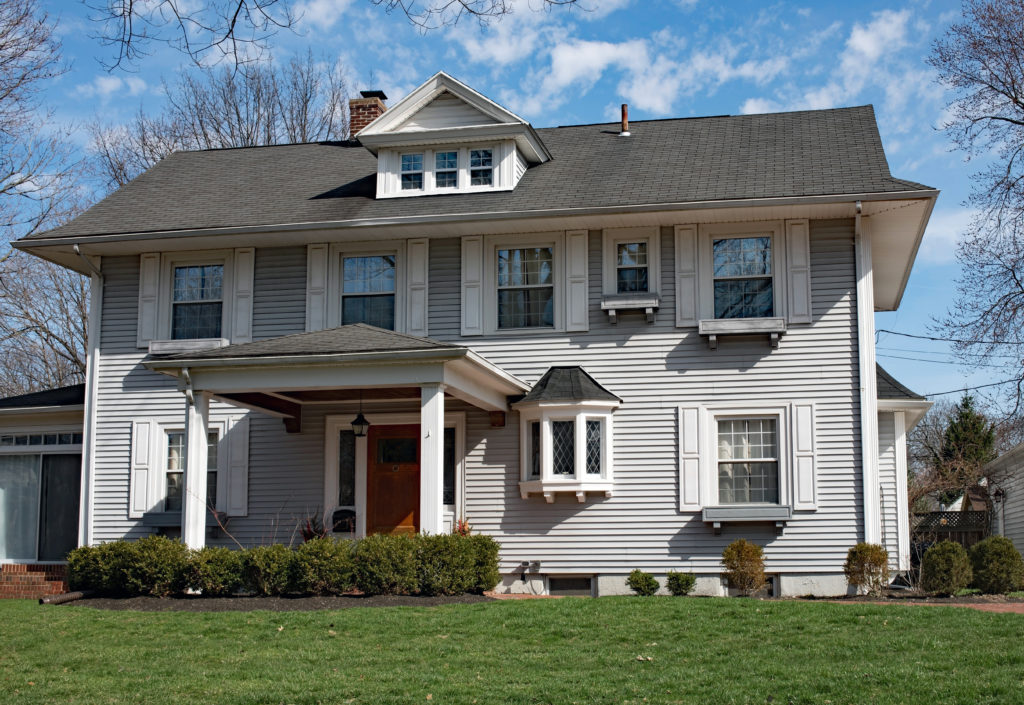March 24, 2022
Property Insurance Occupancy
Do you need to tell your insurance company when you move out of a home?
Inform insurers of any Occupancy Change on your Property or Policy
How to Inform Your Insurer in the Change of Occupancy of your Homeowners Policy
Improperly written Property Policies Can be a Real Issue if you File a Claim – Real Occupancy Examples.
Occupancy, Simply defined:
Confusingly Merriam Webster defines occupancy with two definitions that are helpful in the insurance world: “the fact or condition of holding, possessing, or residing in or on something” and “the act or fact of taking or having possession (as of unowned land) to acquire ownership.” In essence “occupancy” means the “ownhership and ‘residence” of the property. Are article will focus on residence. Who resides in and on the property.
Cambridge defines Occupancy more simply: “someone’s use of a room or building for the purposes of living or work.” Our article will focus on occupancy for living purposes not where you work.
In the world of insurance occupancy is about who [if anyone] is residing in the home or property. Loosely grouped – Occupancy can be broken down into several rough categories:
Owner Occupied – the owner lives in the home.
Secondary Occupied – the owner lives in it part time.
Tenant Occupied – the property is owned by one person [or mutliple people or a Entity] and used by a tenant who has a long term contract.
Unoccupied/ Vacant – the house is either not occupied and / or vacant.
Of course not all insurers have complete agreement about these definitions and this can be why a broker can be of help. However generally speaking most insurers use some version of these loose categories.
*A special note to readers: our article here does not delve into secondary residences nor so called short term rentals – both of which are pretty complex to insure corrrectly. However they do deserve being noted properly when procuring any insurance policy. Nor does this article deal with properties held in Trust, LLCs, or other types of Entities.

How Occupancys are Placed Into Property Insurance Policies:
Most consumers incorrectly assume that all properties are insured by homeowners policies. This is not true. There are multiple different type of property policies and policy forms available. In addition there is similarity, yet not uniformity in how various occupanices are insured via different insurers.
Generally speaking owner occupied dwellings are typically preferrred to be insured by the homeowners policy [HO3, HO5, HO6, among others]. The term homeowners insurance is a specific type of property policy. The same person that owns the property resides in it. This is usually considered Optimal.
Properties that are held for rent are usually insured as so called Landlord Policies. These policies are often written as a DP3 form, but not always. Some insurers choose to write these on commercial policy forms.
Secondary homeowner dwellings can be insured on all sorts of forms. Secondary and Tertiary owned properties are harder to insure. Rarely, but possibly on an HO3/HO5 and more commonly on a DP3 or similar.
Properties that are rented out Short term via Air BnB, etc are exceptionally complex and not easy to define how best to insure them. Actually it is frankly NOT easy to insure them and few of them have proper cover, at least in my opinion.
Properties that are Vacant are also difficult to insure and hard to define. As a side note vacant policies are similar, but not the same, as homes undergoing remodels and may require a very specific type of contractors policy.
Get a Property Insurance Estimate Now
Do you Need to Inform your Insurer About a Change of Occupancy?
Yes. You need to inform your insurer when the occupancy of your property changes. A sample homeowner ISO policy form, the Insurance Services Office, Inc form HO 00 03 10 00, page 2 states in clear language under definitions “Insured Location” means… “The Residence Premises”. Point 11 on the same page expands further defining “The Residence Premises” as “The one family dwelling where you reside…”
“ONE …. DWELLING….RESIDE”
ISO HO 00031000
Page 9 states about limiting coverage “if the dwelling has been vacant for more than 60 consecutive days…” Page 15 excludes “Abandonment of Property.” In addition there are other areas that deal with coverage in regards to occupancy and many policies are different.
Clearly for a homeowners policy you need to “reside” at the property. Dictionary defines reside as “to dwell permanently…”
Therefore if you move out of your home and a tenant moves in… a change of occupancy has occured. Or if a Tenant moves out and the property is vacant for a given period of time – a change of occupancy has occured.
It is in your best interest to inform your property insurer of changes in occupancy.
In my opinion this would include changing from Owner Occupied to Tenant Occupied. Tenant occupied to Vacant, Tenant Occupied to Owner Occupied, etc, etc, etc. In other words tell your insurance company who is living in and on your property. Review this each year with your trusted agent.
For some properties where there are multiple units or dwellings this situation is even more complicated. An example of this could be a four plex where one unit is occupied by the owner, two by tenants, and one newly becomes vacant. This example might not be a big deal – but ask your agent.

Why You Need to Tell Your Insurance Carrier if the Occupancy Changes:
Entities that own property that wish to be properly insured need to inform their insurer of a change in occupancy in order to be be protected from the appropriate risks. In addition informing your insurer about the situation allows for them to properly rate and stand behind the policy should a claim occur.
A simple example can be found in the need for Personal Property Coverage. How much personal property do need covered when you no longer live in the home? Likley a lot less than when you lived there. In addition – The liablity exposure increases when a tenant moves in or when the property become vacant.
There is one very specific endorsement that all property owners should have if renting out their property.
The underwriting questions answered for a home insurance plan will not be the same underwriting questions about a tenant occupied dwelling. Many Landlord policies want to inquire about whom is managing the property for you. Others might want to know if you perform background checks and or have a written contract. They all want to know about the length of the lease. Less than 6 months could be problematic.
“Occupancy, Occupancy, Occupancy, Its all about Occupancy.”
Scott W Johnson, Marindependent Insurance
How Do you Inform your Insurance Company of a Change in Occupancy:
The best way to inform your insurer that the occupancy of the property is changing [or has changed] is by putting it in writing and sending this document to both the agent and insurance company. [Keep a copy for your files.] One may also wish to contact the agent on the phone as well. However relying solely on a phone call is not a good idea. If you send an email, make sure you receive a confirmation.
One of the more common questions I have seen in regards to changing policy forms due to occupancy is Will it Cost More to Insure the Property for a Tenant? The simple answer is…it completely depends on the situation. In some instances it can actually be less expensive and in other situations more expensive. However the total premium outlay is not the only consideration. The exact coverage amounts also tend to change as well resulting in potentially less coverage in certain areas. In other words its can be exceptionally complicated. More complex than a simple 15 minute phone call to a Geko.
“The best way to notify your insurer of a change in occupancy is by putting
it in writing and confirming the letter is received.”
Marindependent Insurance Services LLC
What Will Happen to your Insurance Policy when you Change Occupancy?
Typically, but not always, a change in occupancy will spur a new insurance policy at some point. Not only a new policy but a new type of policy as well, often changing from an HO3 to DP3. Or a HO6 to a DP1. In some extreme situations the policy could be cancelled with no new policy put in place. Often the policies need to go to a new insurance provider, sometimes even a different agent or broker.
As a professional insurance agent I can summarize this situation simply by saying that it is surprising how many properties are missinsured simply due to occupancy. While there are certainly plenty of examples whereby an HO3 might insure a tenant its not common. Incidents of vacancy even more so. Contained within almost all property policies is something called a “vacancy clause.” This clause is not the central theme of this article and is beyond its scope. Suffice it to say that if you home is truly vacant you need a different insurance policy.
Some Occupancy Case Law Examples:
Occupancy issues are not just a theoretical issue for property owners. These are a few simple examples of challenges that have occured when claims happen.
According to Justia Law in Terrell vs State Farm, a property owner was “renting their San Francisco home to tenants for eight years when the front porch collapsed, causing injury to a tenant. ” But “State Farm… denied their claim, because appellants’ homeowners’ insurance policy excluded coverage for injuries arising out of an insured’s business pursuits or the rental of their home.” Source.
A case from 2014 SWE HOMES, LP, Appellant v. WELLINGTON INSURANCE COMPANY deals with the potential coverage from a property that was damaged “by fire when the policy also contained a vacancy clause and the mortgagor had left the property vacant. “
The case Jeune vs. Peerless Insurance Company and Nelson-Patterson Insurance Agency, Inc. dealt with the “material misrepresentations in the application for insurance” after a home burned down soon after it was purchased because they “never moved into the premises after purchasing it.” Barclay Dimon LLP.
As you can see from all three cases improperly written home and property insurance policies due to occupancy can be a real issue when it comes time to file an insurance claim.

Get the Occupany Accurate on your Insurance Policy:
As has been demonstrated correct occupancy type is very important on your property insurance policy. It is important to tell your insurer of this and any other material changes in the risk of the property.
Please don’t just “assume” everything is OK, its often not. Talk with your agent – ask them lots of questions.
-please consult a licensed agent in your jurisdiction before making changes of any kind to any insurance policy.
Additional Case Law Added June 2023:
There has numerous cases revloving around coverage both in favor or and against insureds. An additional case – Epps v. Nicholson (Georgia, 1988) in this a an agent procured a “homeowners policy” for a “rental home” and it was found that the client “failed to read the policy…” This is another example of the incorrect occupancy seemingly being on the policy and thus the wrong policy form was in force.
Bryan v. United States Fire Ins. Co. (Texas, 1970) is another case of occupancy playing a role in determing coverage.
More Information:
More information concerning Insurance Statistics can be found here.








